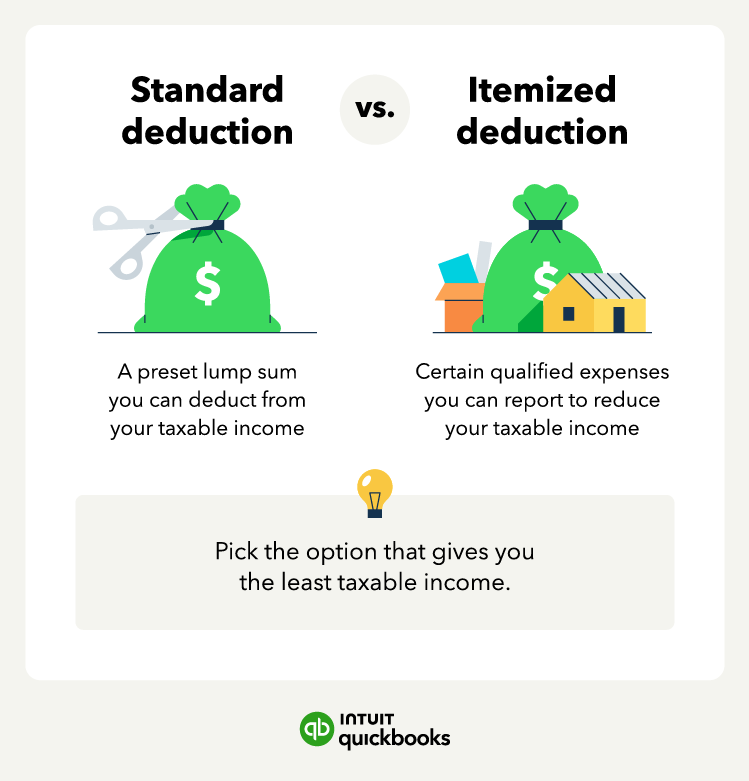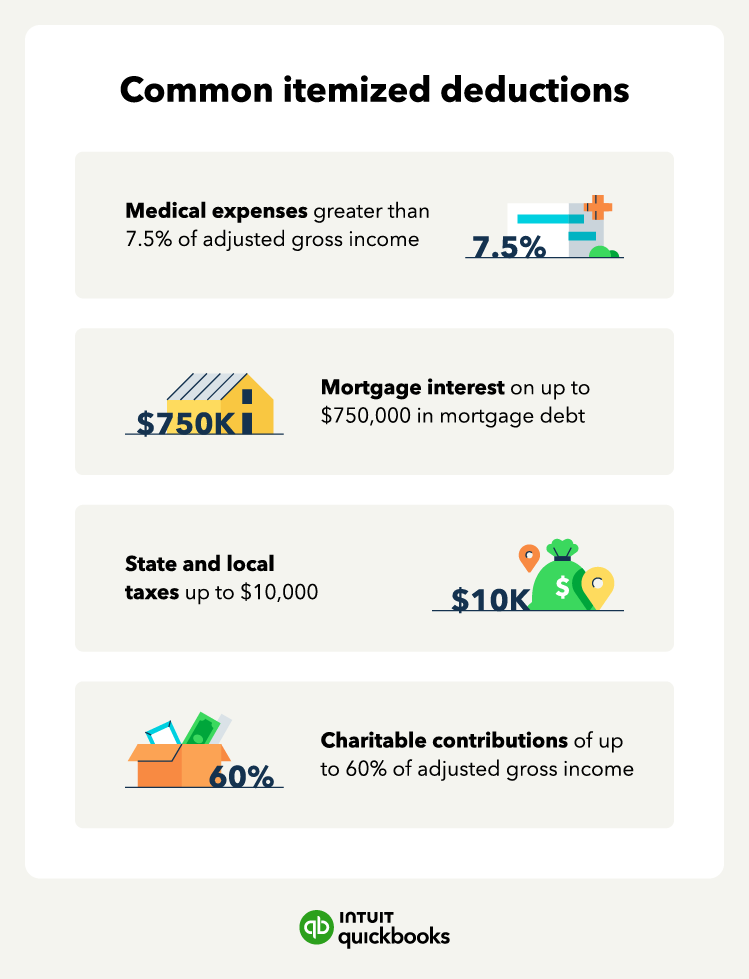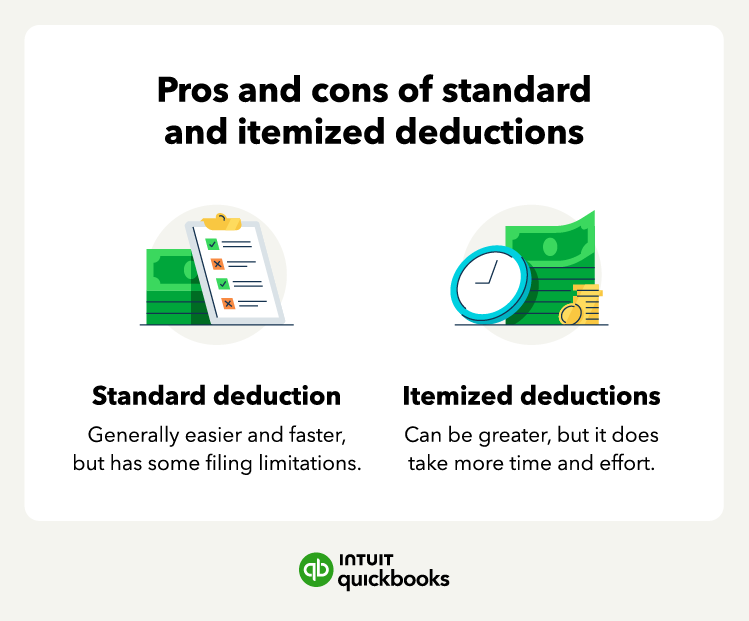Filing your taxes accurately as a business owner requires planning and expense tracking. Getting the most out of your taxes means understanding what deductions you can take.
When you fill out your 1040 form, you’ll have to decide whether to use the standard deduction vs. itemized deductions to reduce your taxable income. Let’s look at how personal tax deductions work and how to pick the one that’s best for you.
Jump to:
- What are standard deductions?
- What are itemized deductions?
- Common itemized deductions
- Miscellaneous itemized deduction
- Pros and cons of standard deduction vs itemized
- Example of standard deduction vs itemized
- Tips for preparing to itemize
- State tax considerations
- Finding peace of mind at tax time
- Standard deduction vs. itemized FAQ













 Note that for mortgages you took out before Dec. 15, 2017, you can deduct mortgage interest on the first $1,000,000 in debt or $500,000 if you’re married, filing separately.
Note that for mortgages you took out before Dec. 15, 2017, you can deduct mortgage interest on the first $1,000,000 in debt or $500,000 if you’re married, filing separately.





